Lab Members
Information for those interested in joining the lab can be found here? Recommendations for applying to graduate school – Article written by one of our REU
A bit about me… I have been the Molecular Ecologist and Conservation Scientist at the Chicago Botanic Garden since 2003.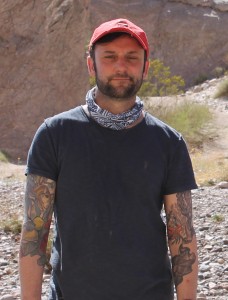
- Before working here, I was a post-doc in the Conner Lab at Kellogg Biological Station at Michigan State University.
- I got my Ph.D. (Cantab) from the Department of Genetics at the University of Cambridge (UK) working with John Barrett and Chris Preston. While at Cambridge I was at Pembroke College.
- I got my undergraduate degree from The Waite Institute of the University of Adelaide (Aust) in Horticulture, Viticulture and Oenology; for my Honours year, I worked with Professor Margaret Sedgley.
My family:
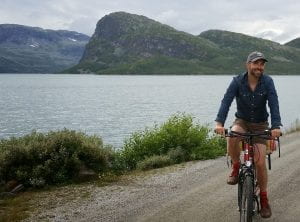


The Lab:
 Dylan Cohen (Postdoc – advised with Kirssa Skogen) is currently studying Amsonia (Apocynaceae) population genetics and systematics. He is also interested in moth pollination dynamics, biogeography of plants from the Andes and southwestern deserts, and using genetics to help inform conservation decisions. Also, he has a cat named Phacelia, loves spicy foods, and baking.
Dylan Cohen (Postdoc – advised with Kirssa Skogen) is currently studying Amsonia (Apocynaceae) population genetics and systematics. He is also interested in moth pollination dynamics, biogeography of plants from the Andes and southwestern deserts, and using genetics to help inform conservation decisions. Also, he has a cat named Phacelia, loves spicy foods, and baking.

Brendan Connolly (MS, Current – co-advised with Paul Cara Donna) is interested in how pollinator networks at the Rocky Mountain Biological Laboratory change over seasonal and annual time scales, and how this can hint at the stability and flexibility of networks in light of a changing climate. To investigate these questions, I will be utilizing genetic techniques alongside more traditional field methods to approach from a unique perspective.

Cael Dant (MS, Current) is interested in carnivorous plants
Andrew Davies (PhD, Current) is broadly in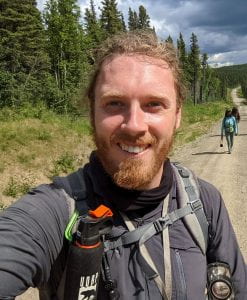 terested in rare plant conservation, and how threatened and endangered species can persist in response to anthropogenic disturbances. More specifically, how population genetics can be used as a tool to better understand processes behind small populations in decline. He is also interested in vegetation mapping, habitat suitability modelling, and ecological restoration, particularly for rare species.
terested in rare plant conservation, and how threatened and endangered species can persist in response to anthropogenic disturbances. More specifically, how population genetics can be used as a tool to better understand processes behind small populations in decline. He is also interested in vegetation mapping, habitat suitability modelling, and ecological restoration, particularly for rare species.
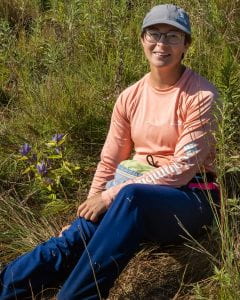
Melissa Duda (MS, Current – co-advised with Andrea Kramer) research focuses on using reproductive biology and ecological niche models to predict the potential impact of hybridization in rare species. She will explore this issue in Gentiana puberulenta, a dry prairie species considered rare in portions of its range, and Gentiana andrewsii, a more common congener that grows in mesic prairies.
Emma Fetterly (MS, Current – co-advised with Andrea Kramer)

Stephan Girard (MS, Current – co-advised with Andrea Kramer) – exploring the possibility of hybridization via natural pollination of various taxa of Cycad held at botanic gardens.

Hilary Noble (Coordinator of Research Labs and Undergraduate Programs). Hilary has taken on two critical roles working with me. She is helping with the coordination of the NSF REU program here at the Chicago Botanic Gardens. In addition, she manages the Herbarium and Genetics Lab, helping with the training and coordination of all volunteers and students. Publications: 1) Fant, J. B., Fluckes, M*., James, E. *, Noble, H., & Wood, J. ++ (2019). Characterization of microsatellite loci in Brighamia insignis and transferability to other genera in the Hawai‘ian lobelioid group. 7(11), 1–6
Marné Quigg (MS, Current) is interested in using genetics to develop seed transfer zones in the restoration of American Elm
Fernando Rocha Vento (PhD, Current – co-advised with Louise Egerton Warburton) is interested in endangered Orchids of Florida in the Oncidium group
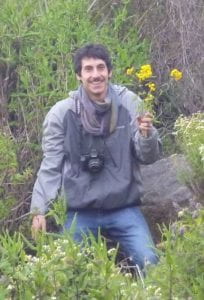 Rafael Urbina-Casanova (PhD, Current – co-advised with Andrea Kramer) is interested in the conservation of endangered plant species. His research focuses on the influence of genetics on the extirpation of small plant populations, and how augmenting genetic diversity and/or decreasing inbreeding could help to improve their conservation status. He is also interested in restoration ecology, and how restoration practice could include rare species, broadening its conservation outcomes. His background includes endemism, phylogenetics, conservation assessment and planning, biodiversity monitoring, and environmental impact assessment of flora and vegetation. Publications. 1) Gavin-Smyth, N., Kramer, A. T., Urbina-Casanova, R., Vitt, P., Fant, J. B., Gavin‐Smyth, N., Kramer, A. T., Urbina‐Casanova, R., Vitt, P., & Fant, J. B. (2021). Genetic rescue reduces mate limitation in a threatened, clonal and self‐incompatible plant species. Restoration Ecology, Frankham 2005, 1–9. https://doi.org/10.1111/rec.13458
Rafael Urbina-Casanova (PhD, Current – co-advised with Andrea Kramer) is interested in the conservation of endangered plant species. His research focuses on the influence of genetics on the extirpation of small plant populations, and how augmenting genetic diversity and/or decreasing inbreeding could help to improve their conservation status. He is also interested in restoration ecology, and how restoration practice could include rare species, broadening its conservation outcomes. His background includes endemism, phylogenetics, conservation assessment and planning, biodiversity monitoring, and environmental impact assessment of flora and vegetation. Publications. 1) Gavin-Smyth, N., Kramer, A. T., Urbina-Casanova, R., Vitt, P., Fant, J. B., Gavin‐Smyth, N., Kramer, A. T., Urbina‐Casanova, R., Vitt, P., & Fant, J. B. (2021). Genetic rescue reduces mate limitation in a threatened, clonal and self‐incompatible plant species. Restoration Ecology, Frankham 2005, 1–9. https://doi.org/10.1111/rec.13458
Past Members:
Zoe Diaz Martin (Postdoc, 2020-2023)- uses genetic techniques to understand the processes that generate patterns of genetic diversity and variation in wild and ‘captive’ plant populations to conserve plant species and their ecosystems. Publications: 1) Diaz-Martin Z±, J Fant, K Havens, W Cinea, JMT Lima, MP Griffith (2003) Current management practices do not adequately safeguard endangered plant species in conservation collections. Biological Conservation 280, 109955 5 2) Diaz-Martin Z±, A Cisternas-Fuentes, KM Kay, RA Raguso, K Skogen, JB Fant (2023) Reproductive strategies and their consequences for divergence, gene flow, and genetic diversity in three taxa of Clarkia. Heredity 131 (5), 338-349 3) Diaz‐Martin Z±, M De Vitis, K Havens, AT Kramer, LM MacKechnie, J Fant (2023 Species‐specific effects of production practices on genetic diversity in plant reintroduction programs Evolutionary Applications
Olivia Murrell (MS, 2023 – co-advised with Zoe Diaz Martin) -Olivia is interested in v conservation methods for critically endangered Amorphophallus titanium.
Reed Benkendorf (MS, 2023) is interested in the application of molecular techniques to investigate pollination networks. His research predominantly focuses on the application of pollen DNA barcoding to uncover pollinator interactions with assemblages of plants with similar floral traits. At the same time, another focus is how paleoclimate, landforms, and hydrology shape the distributions and genetic structure of species. His other interests include phylogeography, rare plants, natural history, and the systematics of clades with high proportions of narrow endemics.
Jeremy Foster (MS, 2022) -Jeremy is interested in various ex-situ conservation methods for critically endangered plant species. His research currently focuses on developing methods to store Brighamia insignis pollen. He is also interested in in-situ conservation of B. insignis and will be working on a project for the outplanting of the species in Hawai`i where it is endemic. Publication 1) Foster, Jeremy A. ++, Seana K. Walsh+, Kayri Havens, Andrea T. Kramer, and J.B. Fant. 2022. “Supporting Long‐term Sustainability of Ex Situ Collections Using a Pedigree‐based Population Management Approach.” Applications in Plant Sciences, no. December 2021: 1–10. https://doi.org/10.1002/aps3.11491.
Katherine Wenzell (Ph.D., 2021 – co-advised with Krissa Skogen). Katie is interested in population genetics, pollinator-mediated floral evolution, and ecological speciation. Her research centres on how geographic variation in floral traits may relate to differences in local pollinators, which in turn shapes gene flow and genetic structure among populations. She’s currently studying how these factors shape population genetics and phenotypic divergence in the Indian paintbrushes (Castilleja). Her work focuses on Castilleja sessiliflora, which shows dramatic variation in floral color and morphology across its range, and which is the first species in its genus known to be pollinated by hawkmoths. (Publications. 1) Wenzell, K. E., McDonnell, A. J., Wickett, N. J., Fant, J. B., & Skogen, K. A. (2021). Incomplete reproductive isolation and low genetic differentiation despite floral divergence across varying geographic scales in Castilleja. American Journal of Botany, 108(7), 1–19. https://doi.org/10.1002/ajb2.1700) 2) Wenzell, Katherine E. +, Krissa A. Skogen, and J.B. Fant. 2023. “Range-Wide Floral Trait Variation Reflects Shifts in Pollinator Assemblages, Consistent with Pollinator-Mediated Divergence despite Generalized Visitation.” Oikos, no. December 2022: 1–18.
Matt Wang (MS, 2021). Matt is interested in population/conservation genetics. His specific interests involve genetic diversity and how external factors affect diversity; particularly herbivory and disease. After working for the National Park Service in Utah for 3 field seasons, he developed an interest in rare cacti. His thesis work focuses on how a newly identified herbivore is affecting diversity in an endangered cactus, Sclerocactus wrightiae. He also intends to build a phylogeny of the Sclerocactus genus to inform land managers of potential risks of herbivory in other Sclerocactus species.
Anita Cisternas Fuentes (Ph.D. 2021) Anita is interested in the importance of mating systems and pollinators on how they influence the likelihood of inbreeding depression, especially in regards to species conservation. For her dissertation, she will be working with different species of Onagraceae that have different combinations of pollinators/mating systems. Using controlled crosses she will be increasing inbreeding to evaluate the effect that this has on the fitness of each species. Publication: 1) Cisternas‐Fuentes A., T Jogesh, GT Broadhead, RA Raguso, KA Skogen, JB Fant (2022) Evolution of selfing syndrome and its influence on genetic diversity and inbreeding: A range‐wide study in Oenothera primiveris. American Journal of Botany 109 (5), 789-805. 2) Diaz-Martin Z±, A Cisternas-Fuentes, KM Kay, RA Raguso, K Skogen, JB Fant (2023) Reproductive strategies and their consequences for divergence, gene flow, and genetic diversity in three taxa of Clarkia. Heredity 131 (5), 338-349
Kris Bonefont (MS 2019) Kris Is interested in Fragmentation and conservation of rare species. For his thesis, he is going to assess the extent to which metrics of landscape structure in naturally fragmented sites explain the distribution of species-level plant traits. He hopes to identify those traits which will predict the best chance of survival in a fragmented landscape.
Drake Mullett (MS, 2019- co-advised with Paul CaraDonna) Drake is interested in parasitic plants and biotic interactions. More specifically his thesis aims to understand what factors influence the relationship between a parasitic plant and the host plant we will subject both plants to varied stress conditions including different nutrient and herbivory conditions and then measure their fitness and reproductive success.
Nora Gavin-Smyth (2018) Nora looked at mate location and genetic augmentation of two Asteraceae species (Eurybia furcata and Cirsium hillii) in woodland and prairie fragments which are self-incompatible and reproduce clonally. her results indicated that introducing pollen from outside populations can effectively relieve mate limitation and increase seed set. Commonly referred to as genetic augmentation or genetic rescue, the long-term effects of this management practice are seldom measured. Publications. 1) Gavin-Smyth, N., Kramer, A. T., Urbina-Casanova, R., Vitt, P., Fant, J. B., Gavin‐Smyth, N., Kramer, A. T., Urbina‐Casanova, R., Vitt, P., & Fant, J. B. (2021). Genetic rescue reduces mate limitation in a threatened, clonal and self‐incompatible plant species. Restoration Ecology, Frankham 2005, 1–9. https://doi.org/10.1111/rec.13458
Jordan Wood (MS, 2018, – co-advised with Kay Havens) Jordan’s research is focused on integrating genetic data and analyses into species conservation planning at botanic gardens. He seeks to understand how population genetics can enable collection managers to develop and maintain optimal genetic diversity in conservation collections to ensure the greatest potential for sustained reintroduction of rare or endangered plants into the wild. Publications. 1) Wood, J. ++, J.D. Ballou, T. Callicrate, J.B. Fant, M.P. Griffith, A.T. Kramer, R.C. Lacy, A. Meyer, S. Sullivan, K. Traylor-Holzer, S.K. Walsh, and K. Havens. (2020) Testing the Zoo Model: Developing an Ex Situ Conservation Infrastructure for Threatened Exceptional Plant Species in Botanic Gardens. Conservation Biology, Volume 34, No. 6, 1416–1425. 2) Hoban, … J. Fant, …. J. Wood, P. Griffith (2020) Taxonomic similarity does not predict necessary sample size for ex situ conservation: a comparison among five genera Proceedings. Biological Sciences, 287(1926), 20200102. 3) Fant, J. B., Fluckes, M*., James, E. *, Noble, H., & Wood, J. ++ (2019). Characterization of microsatellite loci in Brighamia insignis and transferability to other genera in the Hawai‘ian lobelioid group. 7(11), 1–6. 4) Griffith, M. P., Beckman, E., Callicrate, T., Clark, J., Clase, T., Deans, S+., … Wood, J.++ (2019). TOWARD THE METACOLLECTION: Safeguarding plant diversity and coordinating conservation collections. Botanic Gardens Conservation International – US. San Marino, US.
Tania Jogesh (Postdoc, 2015-2018). Tania is working with Krissa Skogen and myself on the NSF-Dimension grant looking at floral scent-mediated diversification of plants in the evening primrose family. She graduated with a Ph.D. in entomology in Dr. May Berenbaum‘s lab where I worked on the ecology and evolution of wild parsnips and parsnip webworms in New Zealand. 1) Tania Jogesh, Rick P. Overson, Robert A. Raguso, Krissa A. Skogen (2017) Herbivory as an important selective force in the evolution of floral traits and pollinator shifts AoB PLANTS, Volume 9, Issue 1,, plw088 2) Bechen, Lindsey L.#, Matthew G. Johnson, Geoffrey T. Broadhead, Rachel A. Levin, Rick P. Overson, Tania Jogesh, J.B. Fant, Robert A. Raguso, Krissa A. Skogen, and Norman J. Wickett. 2022. “Differential Gene Expression Associated with a Floral Scent Polymorphism in the Evening Primrose Oenothera Harringtonii (Onagraceae).” BMC Genomics 23 (1): 1–17. 3) Cisternas‐Fuentes A., T Jogesh, GT Broadhead, RA Raguso, KA Skogen, JB Fant (2022) Evolution of selfing syndrome and its influence on genetic diversity and inbreeding: A range‐wide study in Oenothera primiveris. American Journal of Botany 109 (5), 789-805 4) Skogen, K. A., T. Jogesh, E. T. Hilpman*, S. L. Todd*, M. K. Rhodes*, S. Still, and J.B. Fant. (2016) Land-use change has no detectable effect on reproduction in a disturbance-adapted plant pollinated by long-distance dispersing hawkmoths. American Journal of Botany. 103:1950-1963
Abigail White (MS, 2017 – co-advised with Andrea Kramer) Abbey is currently working on vulnerable plant taxa which are currently rarely included in restoration seed mixes. She is focusing ht on vulnerable species that are currently falling through the cracks due to seed limitations. Her study species is Hill’s Thistle (Cirsium hillii), a native thistle endemic to the Great Lakes region. She aims to assess the genetic diversity within and among populations to determine how isolated these populations are regionally. Ultimately, this landscape genetics study will identify ways to improve reproductive success so it can be included in restoration seed mixes going forward. Publications. White, A, J.B. Fant, K. Havens, M. Skinner, and AT. Kramer (2018) Restoring species diversity: assessing capacity in the US native plant industry. Restoration Ecology Vol. 26, No. 4, pp. 605–611
Chris Woolridge (MS, 2017, – co-advised with Andrea Kramer) Chris is interested in determining appropriate seed sourcing for ecological restoration in light of climate change. Specifically, can assisted gene flow be used to allow restoration populations to adapt to a quickly changing climate? He is conducting a common garden experiment comparing the fitness of five tallgrass prairie species among commercial sources across a latitudinal gradient. This work can help to plan efficient restorations and perhaps create resilient populations. Publications: 1) Woolridge, Christopher B. ++, J.B. Fant, Ana I. Flores, Kelly Schultz, and Andrea T. Kramer. 2023. “Variation in Overall Fitness Due to Seed Source: Projections for Predictive Provenancing.” Restoration Ecology 31 (1), e13717. https://doi.org/10.1111/rec.13717.
Claire Ellwanger (MS, 2016). Claire is interested in the impacts of restoration and management on species recovery and genetic diversity in fragmented habitats. She plans to assess genetic change over time in the federally threatened orchid, Platanthera leucophaea (The eastern prairie fringed orchid) as well as conduct a range-wide genetic analysis. This work will inform current recovery practices and identify regions for conservation priority.
Rick Overson (Postdoc, 2015-2017) Rick is working with Krissa Skogen, Norm Wicket and myself on the NSF-Dimension grant looking at floral scent-mediated diversification of plants in the evening primrose family. His doctoral research focused on the evolution of pronounced intraspecific variation in social behavior in seed-harvester ants of the genus Pogonomyrmex, which are native to the southwestern US. Publication: 1) Skogen, K. A., Overson, R.± P., Hilpman, E. T. *, & Fant, J. B. (2019). Hawkmoth pollination facilitates long-distance pollen dispersal and reduces isolation across a gradient of land-use. Annals of the Missouri Botanical GardenMissouri Botanic Garden, 104(Fall), 495–511. 2) Patsis, Amanda, Rick P Overson, Kriss A Skogen, Norman J Wickett, Matthew G. Johnson, Warren L Wagner, Robert A Raguso, J.B. Fant, and Rachel A. Levin. 2021. “Elucidating the Evolutionary History of Oenothera Sect. Pachylophus (Onagraceae): A Phylogenomic Approach.” Systematic Botany in press (3): 799–811. 3) Bechen, Lindsey L.#, Matthew G. Johnson, Geoffrey T. Broadhead, Rachel A. Levin, Rick P. Overson, Tania Jogesh, J.B. Fant, Robert A. Raguso, Krissa A. Skogen, and Norman J. Wickett. 2022. “Differential Gene Expression Associated with a Floral Scent Polymorphism in the Evening Primrose Oenothera Harringtonii (Onagraceae).” BMC Genomics 23 (1): 1–17. https://doi.org/10.1186/s12864-022-08370-6. 4) Overson RP±, MG Johnson, LL Bechen, SP Kinosian, NA Douglas, JB Fant, PC Hoch, RA Levin, MJ Moore, RA Raguso, WL Wagner, KA Skogen, NJ Wickett (2023). A phylogeny of the evening primrose family (Onagraceae) using a target enrichment approach with 303 nuclear loci BMC Ecology and Evolution 23 (1), 66
Laura Steger (Research Assistant, 2016-2017). Laura has been working on a number of projects, including with Dan Larkin on the genotyping of Phragmites australis samples for the PhragNet project and working with Claire Ellwanger with her Platanthera project. Publications. 1) Hunt, V.M.+, J.B. Fant, L. Steger, P.E. Hartzog+, E.V. Lonsdorf, S.K. Jacobi and D.J. Larkin (2017) PhragNet: crowdsourcing to investigate ecology and management of invasive Phragmites australis (common reed) in North America. Wetlands Ecol Management 25 (5): 607-618. 2) Flower, C.E., J.B. Fant, S. Hoban, K.S. Knight, L. Steger, E. Aubihl, M.A. Gonzalez-Meler, S. Forry, A. Hille, and
A.A. Royo (2018) Optimizing Conservation Strategies for a Threatened Tree Species: In Situ Conservation of White Ash (Franxinus Americana L.) Genetic Diversity through Insecticide Treatment. Forests 9 (4) 202-
Adrienne Basey St Clair (MS, 2015 – co-advised with Andrea Kramer) . Adrienne is looking for changes in genetic diversity when a wild plant is brought into cultivation. Her study species is golden paintbrush (Castilleja levisecta), a threatened species native to the prairies of western Oregon and Washington, which is being used in number of restorations. Publications: 1) Basey A., J.B Fant, A.T. Kramer (2015) Producing native plant materials for restoration: ten rules to collect and maintain genetic diversity. Native Plants Journal 16:37-53. 2) St. Clair, A. B., Dunwiddie, P. W., Fant, J. B., Kaye, T. N., & Kramer, A. T. (2020). Mixing source populations increases genetic diversity of restored rare plant populations. Restoration Ecology, 1–11. https://doi.org/10.1111/rec.13131 2) St. Clair, A. Basey., Dunwiddie, P. W., Fant, J. B., Kaye, T. N., & Kramer, A. T. (2020). Mixing source populations increases genetic diversity of restored rare plant populations. Restoration Ecology, 1–11. https://doi.org/10.1111/rec.13131
Eileen Sirkin (Volunteer, 2003-2016). A PhD from University from Chicago, Eileen has been working in the Fant Lab since 2003. She has been working on numerous studies, many of which are now published. Publications: 1) Fant, J.B., A.T. Kramer , E. Sirkin and K. Havens (2013) Genetics of reintroduced populations of the narrowly endemic thistle, Cirsium pitcheri (Asteraceae). Botany 91 (5) 301-308), 2) Maschinski J., E. Sirkin and J.B. Fant (2010) Using Genetic and Morphological Analysis to distinguish endangered taxa from their hybrids with the cultivated exotic pest plant Lantana strigocamara (syn: Lantana camara) Conservation Genetics 11 (5) 1607-1621 & 3) Fant, J.B., R.M.Holmstrom, E. Sirkin, J.R. Etterson, and S. Masi (2008) Genetic structure of threatened native populations and propagules used for restoration, in a clonal species, Ammophila breviligulata (American beachgrass). Restoration Ecology 16 (4) pp. 594-603.
Emily Dangremond (Visiting Postdoc, 2014-2016). Emily is a visiting postdoctoral research fellow working with Candy Feller at the Smithsonian Environmental Research Center. She is working in the genetics lab looking at differences in mangrove populations at the migration front compared to the center of the range.
Evelyn Williams (Postdoc, 2012-2014) Evelyn worked on the population genetics of the gypsum endemic Lepidospartum burgessii in Texas and New Mexico. Evelyn is now working with Dan Larkin on his phylogenetic restoration project. Publications: 1) Williams E.W., R. Cheung, C. Siegel, M. Howard, J.B. Fant, K. Havens (2016) Narrowly endemic does not mean depauperate: population genetics of the gypsophile Lepidospartum burgessii (Asteraceae).Conservation Genetics 17(5) 1201-1211
John Keller (Volunteer; 2003-2014) A retired professor from Rosalind Franklin University, with a PhD from MIT in Biochemistry (1966), John was a valuable member of the Fant Lab and made important contributions to numerous studies. Publications: 1) Fant, J.B., S. Masi, J.M. Keller, and R. Mann (2007) Investigating the reproductive health of Hill’s thistle’s (Cirsium hillii) populations in the Chicago Region. Chicago Wilderness Journal: Volume 5, Number 1, March 2007 & 2) Fant, J.B., K. Havens, J.M. Keller, A. Radosavljevic+ and E.D. Yates and K. Havens (2014) The influence of contemporary and historic landscape features on the genetic structure of the sand dune endemic, Cirsium pitcheri (Asteraceae). Heredity 112, 519–530
Laney Widener (MSc 2014, NU) Laney is conducting work on the Castilleja affinis subspecies complex ( ssp. affinis, ssp. litoralis, and ssp. neglecta) along with closely related coastal species (C. mendocinensis, C.wightii, and C. latifolia) within the northern portion of the California Floristic Province. This is an ideal system to explore the genetic divergence and taxonomic relationships between subspecies as all three subspecies co-occur within the same geographic area, cover very unique habitats; from serpentine outcrops to coastal bluffs, and their distributions range from endangered to common. Publication: Widener, L. ++, & J.B. Fant (2018) Genetic differentiation and diversity of two sympatric subspecies of Castilleja affinis; a comparison between the endangered serpentine endemic (spp. neglecta) and its widespread congener (ssp. affinis) Conserv Genet 19 (2) 365-381
Anna Braum (MSc 2014, NU) Anna’s research focused on floral trait polymorphism in Castilleja coccinea (Orobanchaceae), considering both the role of pollinator-mediated selection in driving variation, as well as the importance of abiotic factors in regulating pleiotropic effects of floral color.
Kelly Ksiazek (MS 2011, NU) Kelly’s master’s research aimed to understand the ecological services available on green roofs by looking at a roof’s ability to function as a sustainable habitat. Her research showed that although green roofs do get visited by fewer and less diverse communities of bees, flowering native plant species do not suffer from poor seed production. Publication: 1) Ksiazek, K., J. Fant and K. Skogen. 2014. Native forbs produce high-quality seeds on Chicago green roofs. Journal of Living Architecture 2:e2. 2) Ksiazek, K., J. Fant and K. Skogen. 2012. An assessment of pollen limitation on Chicago green roofs. Landscape and Urban Planning 107: 401-408., 3) Ksiazek-Mikenas, K.+, Fant, J. B., & Skogen, K. A. (2019). Pollinator-Mediated Gene Flow Connects Green Roof Populations Across the Urban Matrix: A Paternity Analysis of the Self-Compatible Forb Penstemon hirsutus. Frontiers in Ecology and Evolution, 7(August), 299. https://doi.org/10.3389/fevo.2019.00299
Alona Banai (MS 2008, NU) Thesis Research: Alona studyied the putative hybridization between the federally, threatened prairie legume, Prairie Bush Clover, Lespedeza leptostachya Englem. and its co-occurring congener, the common Round Headed Bush Clover, L. capitata Michx. Publication: Fant, J.B., A. Banai, K. Havens and P. Vitt (2010) Morphological and molecular evidence of hybridization between the federally threatened Lespedeza leptostachya Englem. and its co-occurring congener Lespedeza capitata Michx. Conservation Genetics 11 (6) 2195-2205
Benjamin Staehlin (MA 2009, NU) For his Master’s thesis, Ben was interested in the potential effects of climate change on the restoration of Cirsium pitcheri in Illinois. Possible donor populations were screened to determine their response to predicted climate change scenarios in order to select robust donor options. He compared seedling establishment at 2007, 2030 and 2095 projected conditions) Publication: Staehlin B. & J.B. Fant (2014) Climate change impacts on seedling establishment for a threatened endemic thistle. The American Midland Naturalist 173(1):47-60. 2015
Rebecca Tonietto (MA 2009, NU) Becky’s master’s worked focused on surveying native bee communities in urban gardens and green roofs. With over 500 bee species in Illinois alone, bees are diverse and important prairie pollinators, and she was interested in determining how well some of these native bees can use urban spaces. In order to better understand how to conserve and potentially restore native bee communities, it is necessary to understand factors that structure native bee community composition. Publication: Tonietto, R., J. Fant, J. Ascher, K. Ellis, and D. Larkin. 2011. A comparison of bee communities of Chicago green roofs, parks and prairies. Landscape and Urban Planning 103:102-108.